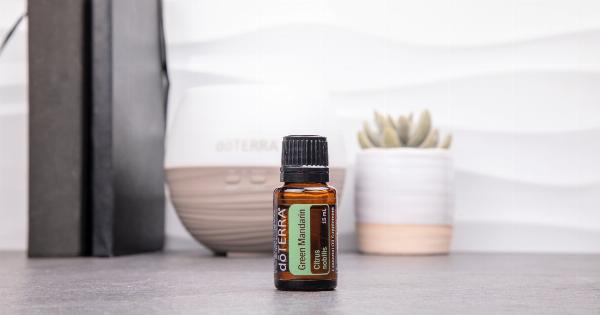Sweating is a natural process that helps regulate body temperature and keeps us cool. However, some individuals may experience abnormally high levels of sweat, which can be both uncomfortable and embarrassing.
This excessive sweating, also known as hyperhidrosis, can significantly impact a person’s daily life and self-confidence. In this article, we will explore the causes, symptoms, and treatment options for excessive sweating.
What causes excessive sweating?
Excessive sweating can be caused by a variety of factors, including medical conditions, environmental triggers, and genetic predisposition. Some common causes include:.
1. Hyperhidrosis
Hyperhidrosis is a medical condition characterized by excessive sweating beyond what is required for temperature regulation. It can affect specific body parts, such as the palms, soles of the feet, or underarms, or can be generalized.
This condition is often genetic and can have a significant impact on an individual’s quality of life.
2. Menopause
Menopause is a natural stage in a woman’s life when her menstrual cycle ceases. Fluctuations in hormone levels during this period can lead to hot flashes and excessive sweating.
These symptoms can vary in severity but are usually temporary and subside over time.
3. Anxiety and Stress
Anxiety and stress can trigger the body’s “fight or flight” response, leading to increased sweat production.
This excessive sweating is often more prevalent in certain situations, such as public speaking, job interviews, or social interactions. Managing stress levels and practicing relaxation techniques can help reduce sweating in these situations.
4. Certain Medications
Some medications, such as antidepressants, antipsychotics, and certain blood pressure medications, can cause excessive sweating as a side effect.
If you suspect that your medication is causing excessive sweating, consult with your healthcare provider to discuss alternative options.
5. Obesity
Obesity is associated with numerous health conditions, including an increased risk of excessive sweating. The excess body weight can lead to increased insulation, trapping heat and causing the body to sweat more to cool down.
Losing weight through a healthy diet and regular exercise can help reduce excessive sweating in obese individuals.
6. Medical Conditions
Some medical conditions, such as thyroid problems, diabetes, heart disease, and certain infections, can be associated with excessive sweating. Treating the underlying medical condition often helps alleviate the excessive sweating symptoms.
What are the symptoms of excessive sweating?
The main symptom of excessive sweating is, of course, the production of more sweat than necessary. However, individuals experiencing abnormally high levels of sweat may also encounter the following symptoms:.
1. Visible sweat stains
Excessive sweating can result in noticeable sweat stains on clothing, especially in the underarm area. This can be embarrassing and cause self-consciousness in social situations.
2. Skin irritation
Constant moisture on the skin due to excessive sweating can lead to skin irritation, such as rashes, redness, or fungal infections. Keeping the affected areas clean and dry can help prevent these issues.
3. Strong body odor
Excessive sweating can contribute to the development of strong body odor, particularly in areas with dense sweat glands, such as the underarms. Maintaining good personal hygiene and using antiperspirants or deodorants can help manage body odor.
4. Social and emotional impact
Excessive sweating can have a significant impact on a person’s social life and emotional well-being.
People with hyperhidrosis may avoid social situations or feel self-conscious about their condition, leading to reduced self-esteem and confidence.
How can excessive sweating be treated?
If you are experiencing abnormally high levels of sweat, it is advisable to consult with a healthcare professional who can diagnose the underlying cause and recommend appropriate treatment options. Some common treatments for excessive sweating include:.
1. Antiperspirants
Over-the-counter antiperspirants containing aluminum chloride can help reduce excessive sweating by temporarily blocking sweat glands.
These can be applied to the affected areas, such as the underarms or palms, before bedtime and washed off in the morning.
2. Prescription-strength antiperspirants
If over-the-counter antiperspirants are not effective, your healthcare provider may prescribe stronger antiperspirants containing aluminum chloride hexahydrate. These are typically applied to the affected areas at night and washed off in the morning.
3. Medications
In some cases, medications such as anticholinergics or beta blockers may be prescribed to reduce excessive sweating. These medications work by blocking certain chemical messengers responsible for activating sweat glands.
4. Botox injections
Botox injections can effectively reduce excessive sweating by blocking the chemical signals that stimulate sweat glands. This treatment is commonly used for underarm sweating and provides temporary relief for several months.
5. Iontophoresis
Iontophoresis involves using a medical device that passes a mild electric current through water and the skin’s surface.
This treatment is primarily used for excessive sweating in the hands or feet and requires multiple sessions to achieve optimal results.
6. Surgery
In severe cases of hyperhidrosis that do not respond to other treatments, surgical options such as sweat gland removal or sympathectomy may be considered.
These procedures are generally reserved for extreme cases due to their potential risks and complications.
Managing excessive sweating
In addition to medical treatments, there are several lifestyle changes and self-care measures that can help manage excessive sweating:.
1. Wear breathable clothing
Choose clothing made from natural fabrics such as cotton or linen that allow air to circulate around the body and absorb moisture. Avoid synthetic materials that trap heat and contribute to sweating.
2. Use absorbent powders
Applying talcum or cornstarch powder to areas prone to excessive sweating can help absorb moisture and reduce friction, preventing skin irritation and chafing.
3. Practice good hygiene
Shower daily with a mild soap and thoroughly dry the skin afterward. Use antibacterial or antifungal soaps to prevent the occurrence of skin infections.
Keeping the affected areas clean and dry can minimize the discomfort associated with excessive sweating.
4. Avoid triggers
Identify triggers that may worsen your excessive sweating, such as spicy foods, caffeine, alcohol, or hot beverages. Limiting or avoiding these triggers can help reduce sweating episodes.
5. Stress management
Since stress and anxiety can exacerbate excessive sweating, practicing stress management techniques like deep breathing exercises, meditation, or yoga can help regulate the body’s response and reduce sweating.
Conclusion
Excessive sweating, or hyperhidrosis, can significantly impact a person’s quality of life. Understanding the underlying causes and available treatment options is essential for managing this condition effectively.
Whether it is using antiperspirants, medications, or exploring surgical options, consulting with a healthcare professional is crucial for finding the most suitable solution. Additionally, incorporating lifestyle modifications and stress management techniques can help minimize excessive sweating’s impact on daily activities and overall well-being.































